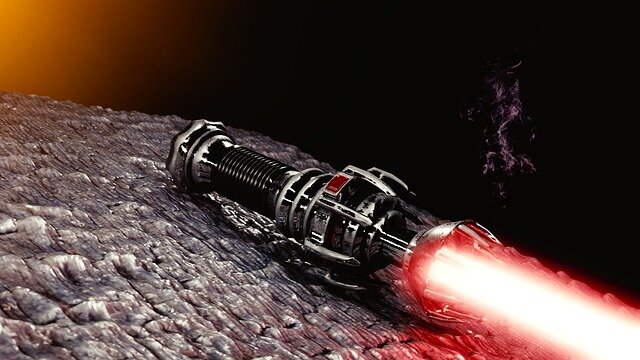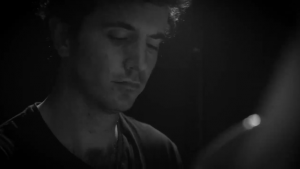Recently I had to choose which movie I was going to see. There was a variety of choices—war, a sex scandal, a generic action movie. Let me tell you what I seek from art: an experience of the ideal, a feeling of spiritual replenishment through the sight of human greatness. Now you know why I chose Star Wars. I will elaborate, quickly mentioning that, throughout this article, I’m drawing heavily on the aesthetic philosophy of Ayn Rand.
I do not seek out characters I can “relate to”, but I do seek out characters I understand, with the heroes’ greatness or the evil they vanquish on full, naked display. I do not seek out the everyday world, I see that every day. What I seek is Romanticism.
Do not tell me that the art of something like Star Wars is silly because “real life isn’t like that”. What Star Wars represents is real life, in essence. Star Wars represents the essential differences between good and evil, and does it with great consistency through each aspect of the film: in terms of the characters’ goals and actions, in terms of the characters’ looks, in terms of the characters’ dialogue, in terms of the music. Notice the colours of the villains: black suits and masks, fiery red lightsabers, the sterile uniformity of the stormtroopers or the lifeless grey of the Starkiller base. Notice the colours of the heroes: beautiful people wearing brighter and varicoloured clothing, blue lightsabers, their base amidst a lush forest. This is not a blind resort to a cliché; it is a subconscious pull towards one of the most important functions of art: to present the essentials of existence through a recreation of reality.
Evil is presented in Star Wars as ugly (even physically), driven by hatred or irrationality, and is ultimately weaker. This is real life, in essence. The good is represented as strong, driven by a pursuit of life rather than destruction—and ultimately stronger. This is real life, in essence.
There are many “intellectuals” of the art world who would sneer at such depictions as being comic-like or “unrealistic”. In truth, it is only their ignorance on display. They cannot look beyond the surface. Star Wars isn’t meant to be realistic in the sense they mean, and the reference to something being comic-like is only half true, since comics did not originate this artistic aesthetic.
If one believes that evil is the evil because it leads to the destruction of life, and the good is good because it leads to human flourishing, then the power of the Romantic aesthetic which Star Wars possesses is its ability to look beyond the range of the moment, to translate the vast complexity of everyday events and chaos, to discard the irrelevant and distil the important, and show us what good and evil ultimately are.
The role of a hero in art is to provide an image of moral perfection, to show the untainted embodiment of unbreached virtue. It is to show a moral code in full practice. Unfortunately, our culture and art have become so morally corrupted that it cannot accept what it was once ubiquitously able to accept: a brilliantly stylised depiction of good and evil. It is indeed telling that in order to present this with at least some acceptance it must be done under the guise of Star Wars, protected by the balm of nostalgia and the excuse of continuity. Or sometimes this aesthetic makes its way to the screen in more childish forms, in superhero films like Spider-Man, thus accepting by default its status as “unserious” art.
Notice how people snort at the notion of a full hero, at the depiction of someone who is morally perfect—not someone who is half-good, half-evil; not someone who is mostly good but bearing some evil—a completely perfect individual from the standpoint of ethics (I do not mean from the standpoint of intelligence or knowledge). Anti-heroes or those who are only partly good people are presented, by contrast, as being “realistic”. But moral action is a matter of choice. To hold purity as unrealistic and badness as realistic is to either obliterate choice in the matter (and thus obliterate the concept of “morality”), or it is to subordinate one’s imagination and ingenuity in art to the principle of everyday observation, and thus default on the most desperately crucial and life-saving aspect of art: a glimpse of the ideal in man.
There might be the claim that characters imbued with magical powers such as the Force should not be taken seriously. But in good art (‘good’ according to my unapologetic standards), the magical powers of heroes or villains function as symbols for powers that exist in reality. The truth is that the Force stands for a power greater than any power of magic, than any power of telekinesis or lightning spurting from fingers. The truth is that the Force stands for moral conviction. It is the greater power, because moral conviction is the base of all action: lose it, and you cannot act, whether with lightning fingers or not; lose it, and you have no guide, you will betray that which you love and hasten the evil.
That the Force stands for moral conviction is shown through its connection in the film with philosophy, through the fact that the heroes and villains seem to acquire the Force through a heightened perceptiveness in character rather than, say, through a nuclear meltdown. Note that all the magic in the world won’t save the heroes in the film when their virtue falters—the Force is subordinate to morality. And watch the film again and you’ll find that what you’re really drawn to is not the heroes’ magical powers anyway, but their unyielding purity and bravery.
I certainly regret many aspects of the latest trilogy—its plot started with some promises but became hackneyed and shoddy. It has no coherent, overarching theme. The spiritual roots of the characters are never fully explained. We get the sense that they are fighting for grand motives, and are moved by profound convictions, but this is only an imitation, like how a silent film might portray conversation—And I do regret that we have to rely on a rarity like Star Wars for Romanticism in today’s culture. But of all that is on offer in film at the moment, it is among the best.
When we strive to depict heroism and grandeur not just as an occasional detour but as a matter of course, not just as a reminiscent escape from the filth and piss of today’s “art” but as an aesthetic principle, then we will have begun the sunlit ascent to the rebirth of Romanticism, the rebirth of beauty, and the rebirth of a life-serving art.
*****
image via GooKingSword (Pixabay)



Comments
2
Leave a Reply
I remember someone’s essay about how science fiction has become equivalent to religion for the nerdy, the logical, the rules-based thinkers. It is where we find moral lessons and heroes otherwise lacking in the real world.
I read just recently of the effort to make the men attending West Point less masculine and more feminine, toxic masculinity being a mere bad reaction to an all-girl universe. Years ago, I flew with a young copilot who experienced the same put down of maleness during hiring at one of the top airlines. The captain was given a scenario where he’d have to counsel crewmembers growing intimate in their off duty lives. In the interview he was asked how he would approach the amorous couple—“Unless the affair influenced their conduct in the cockpit, I wouldn’t touch that one with… Read more »